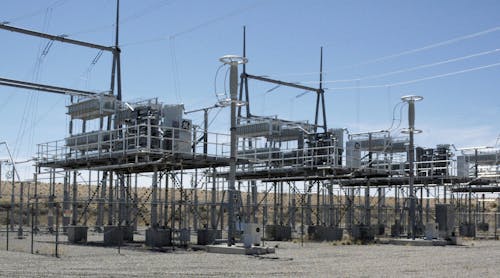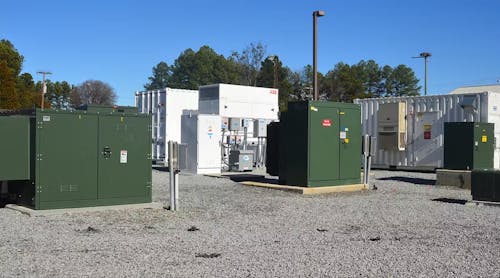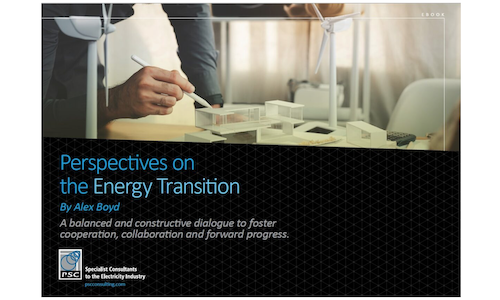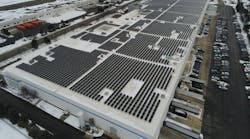Officially autumn begins in September, and it can’t come soon enough! Copernicus, the European Union’s climate change service said the Earth saw the hottest June on record. That was followed by several U.S. climate tracking agencies reporting the planet recorded a series of the highest average global temperatures ever reach in July. The sizzling temperatures were reported in North America, Europe, and Asia, but heat wasn’t the only extreme weather events making headlines in 2023.
There were wildfires, bomb cyclones, floods of biblical proportions, and more including concern about the power grid’s ability to provide electricity. While some portions of the globe were coping with prolonged heatwaves and lingering heat domes (i.e., a high ridge of hot stagnant air), others grappled with dangerous storms that included extensive flooding. It hasn’t been a good year for the power grid with the extreme weather conditions.
Summer saw peak demand records continuously being broken, but the power kept flowing. Of course there were bumps in the road with outages and near outages affecting large numbers of customers. Experts are concerned that this summer’s heat stress will have future consequences on the power grid. If you’re interested in real-time outage tracking, the PowerOutage.us website is a good place to see what’s taking place across the U.S. at any given time.
Heatstroke or Heat Exhaustion
The effects of extended heatwaves are insidious because they tend to be cumulative. According to a report from the Department of Energy (DOE) extreme heat is listed as one of the leading threats to reliability and resilience to the power system. This summer some portions of the power system experienced the equivalent of a heat exhaustion whereas others suffered what could only be called heatstroke, but there’s a resolution – the decentralized power system.
One of the most prominent technologies for decentralization is microgridation (i.e., the integration of microgrids in the power system). Microgridation puts the power source close to the load, which makes a utility’s system more robust. It does it without resorting to the old-school tradition of “more wire in the air.” Conventional approaches such as building transmission, adding distribution, or installing generation plants need help to get the job done. Today’s microgrids can provide that boost a utility’s power network when it comes to climate resiliency.
Before moving on, it’s a good idea for everyone to be on the same page. What is a microgrid? According to NREL (National Renewable Energy Laboratory), “A microgrid is a group of interconnected loads and distributed energy resources that acts as a single controllable entity with respect to the grid. It can connect and disconnect from the grid to operate in grid-connected or island mode.”
According to a study performed by the marketing company Reliable Research Reports, “the global microgrid market is expected to grow at a CAGR (compound annual growth rate) of 6% during the forecast period of 2023-2030.” They went on to say, “The global microgrid market size was estimated at US$ 29.99 billion in 2023 and it’s expected to surpass US$ 85.7 billion by the end of 2030.” The paper pointed out that “some of key players in the market include ABB, NEC, GE, Aquion Energy, Echelon, Raytheon, S & C Electric Co, Eaton Corporation, Sunverge Energy, Siemens, Toshiba, General Microgrids, and Lockheed Martin, among others.”
Microgrid technology has matured to the point it’s adaptable to any requirement needed by a utility for their power network. They can be installed or either side of the meter and their sizes can be wide-ranging. Also, microgrids are a valuable tool for utilities adopting net-zero goals in the transition from fossil fuels to clean energy alternatives. It all starts with the addition of distributed energy resources (DERs) including battery energy storage systems (BESS).
Microgrid Variety
Earlier this year, San Diego Gas & Electric (SDG&E) announced they were expanding their BESS and microgrid sites. They currently have 20 BESS and microgrid sites rated 95 megawatts (MW) in service with another 200+ MWs in development. SDG&E points out their microgrids can operate independently of or parallel to their large regional grid. This flexibility allows SDG&E to keep critical community facilities powered during outages while reducing the overall impacts of power outages on their customers.
Recently, Lebanon’s electricity infrastructure got a boost from microgrid technology. The existing power system has some issues that were ideal for microgridation. According to Sungrow they were awarded eight contracts with local partners in Lebanon to supply utility-scale microgrid/BESS projects. The projects will be commissioned in the 4th quarter in 2023 and have a cumulative capacity of 14 MW (megawatts)/ 24.9 MWh (megawatt hours) with a photovoltaic capacity of 12.4 MW. The news release said the solar-plus-storage system will provide power to communities and facilities in need of electricity.
Microgrid technology gave Duke Energy options when it came to serving the town of Hot Springs, North Carolina. Rather than building a second feeder to fix an outage prone feeder, Duke Energy decided a microgrid was more flexible for the needed backup power source. The solar powered 2MW/4.4 MWh microgrid has enough power to supply the town for extended periods of time. The microgrid utilizes Wärtsilä’s sophisticated energy management system, the GEMS Digital Energy Platform, for integrated control of both the solar and energy storage facilities. The microgrid went into service in early February 2023. Duke reported they have numerous smaller microgrids on their system, but this is the first one that is powering an entire town.
In early May, 2023 microgrid technology experienced a quantum leap with the opening of California’s first residential community. Shadow Mountain is described as being a novel microgrid community, and it has been getting a great deal of attention in the power delivery industry. The Shadow Mountain master plan is a research and demonstration project involving the University of California, Irvine, the U.S. Department of Energy, Southern California Edison (SCE), Schneider Electric, KB Home, and SunPower. It’s located in Menifee, CA and has two adjacent communities/microgrids with a unique electric power system.
The communities have regular electric power service from SCE, but then it gets impressive. Each of the 219 homes in the two communities are all-electric, solar-, and battery-powered homes with electric vehicle capabilities. In addition the homes are connected to their community’s microgrids. In the event of a power outage on the grid, a home can draw power from its own minigrid or the larger community microgrid. With all the combinations/configurations of power sources, we are going to be hearing more about this project and managing the complex interactions found in microgridation.
Smarter Microgrids
Speaking of managing microgridation, let’s explore this subject matter a little further since artificial intelligence (AI) has been reported in advanced microgrid management systems. Microgrids are no longer simply backup power supplies, they are being designed to offer a variety of applications on both sides of the meter, but it’s resulting in some amazingly complex schemes.
One of the most challenging applications is found in the coordinated local grid area, such as a community microgrid. Controlling them becomes more difficult because of diversity of power sources and loads. AI’s analytic abilities were made for this scenario. AI can turn terabytes of data, from many different sources, into usable information that can be used to optimize a microgrid’s performance.
By sifting through masses of customer load data, energy production data, energy storage capacity data, and historical weather data, the microgrid’s controller becomes a microgrid energy management system or digital twin. It makes forecasts that improve the microgrid’s demand response and energy trading abilities, but it doesn’t stop there.
AI’s ability also allows the microgrid to be a real-time decision maker. That enhances its energy distribution, which improves the reliability, resiliency, and efficiency of the microgrid, not to mention enhancing grid stability. Predictive maintenance is another advantage related to its decision-making skills. When the machine learning algorithms are applied to a digital twin, they excel at finding patterns that predict when the microgrid’s components can be expected to fail.
This is an important trait for industrial asset management systems and it’s no different with the power grid’s microgrids. Digital twins detect abnormalities and that allows for proactive maintenance. Using this tool lets operations personnel mitigate risks by planning maintenance at non-critical times, and reduces unscheduled outages. AI integration has another attribute that is getting attention throughout the power delivery industry, autonomous operation.
As the technology evolves, the potential for making smarter microgrid management systems with autonomous AI-based capabilities are becoming a reality. Today’s schemes require limited human interaction, and it’s crucial as more DERs come on the power grid needing efficient interaction with the growing numbers of microgrids.
These latest digital trends may seem like science fiction, but they are not. They’re smart microgrid technologies that are available today. They’re complicated, but they’re very user friendly and an important tool needed for the 21st Century power grid!











